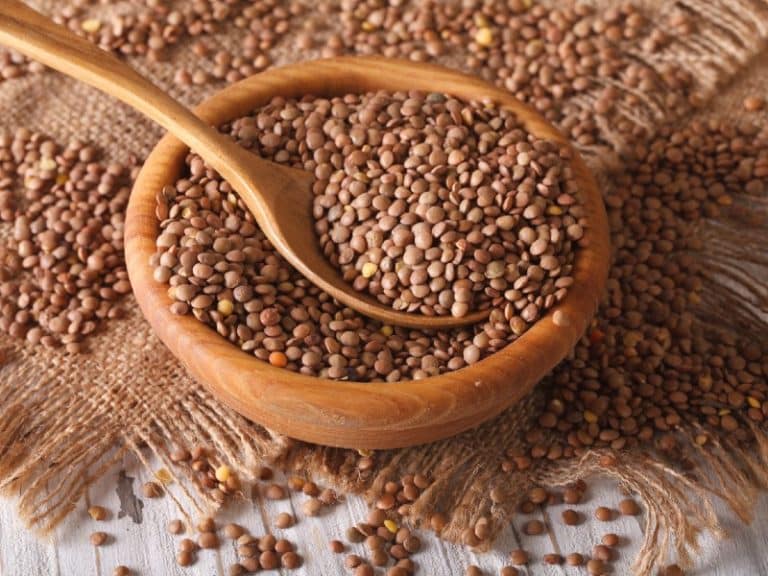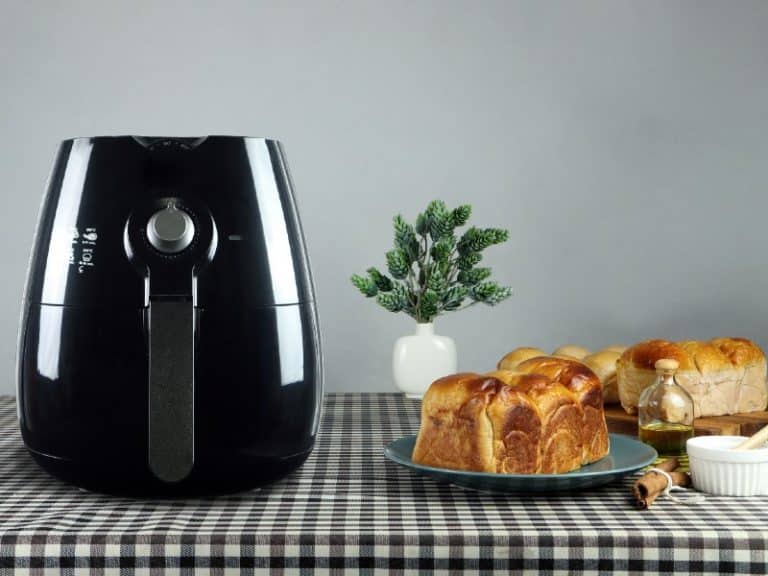How to tell if a Sweet Potato is Bad – A Guide
Ah, sweet potatoes, a favorite fall root vegetable. And come Thanksgiving, sweet potatoes feature in delicious casseroles, are baked and stuffed, mashed or roasted, or become part of hearty salads.
Sweet potatoes are so tasty and versatile that it’s easy to grab a big bag and then find yourself with too many.
Here, we’ll discuss how to store them, show you how nutritious they are, and when to throw out ones that have gone bad.
Selecting raw sweet potatoes
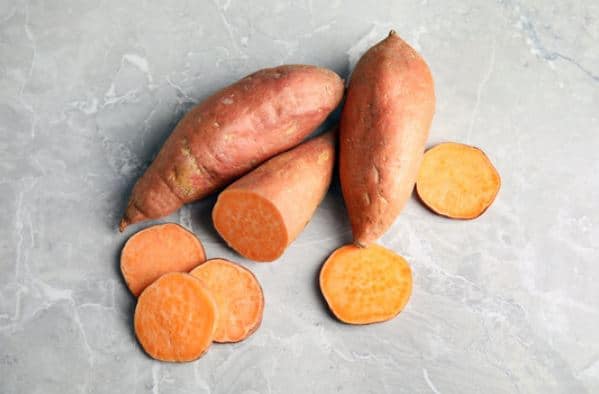
Before you buy a sweet potato, it’s always a good idea to inspect the flesh for strange colors (dark spots), holes, and the presence of mold. Avoid mushy sweet potatoes!
Sometimes, an otherwise good-looking sweet potato will have signs of mold growth on one or both tips. Reject it because even if the more significant middle part looks good, it will spoil quickly.
A healthy sweet potato should have a uniform color. It may probably have rows of dark, shallow depressions up and down its length, but that’s normal.
Small sprouts will grow from some of those depressions if left alone too long. But you can even eat a sweet potato with a few short shoots. Just cut them away.
Select good sweet potatoes that are dry, smooth, firm, and heavy in hand.
Signs of spoilage for sweet potatoes have spongy, soft spots. They might have turned dark brown or have black spots. Any mold is suspicious.
Reject sweet potatoes that show signs of shriveling. Having lost moisture, they’re apt to rot.
If a raw sweet potato has a weird growths or an unpleasant odor. It’s a sign of spoilage of sweet potatoes and could lead to food poisoning. Throw it out to the trash! This is undoubtedly true of cooked sweet potatoes, too.
Sweet potatoes and their white liquid
White droplets that appear when you slice sweet potatoes are starchy sap. It’s perfectly safe to eat. No need to wipe or rinse it off unless you want to.
If your sweet potato doesn’t have that white liquid, don’t worry. It’s fine.
Sweet potatoes that turn black when sliced
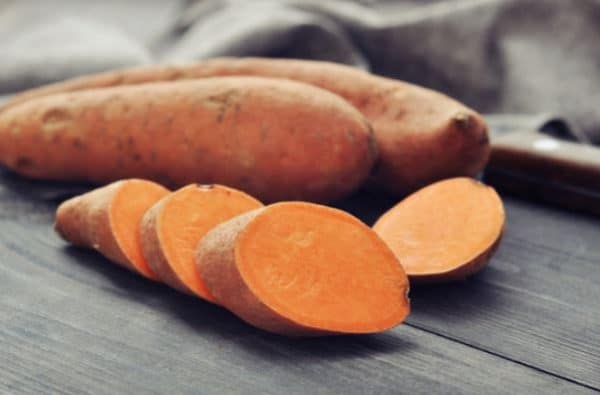
The starch in sweet potatoes may turn dark when they’re chopped or sliced. This is harmless. The way to treat it is to put the pieces in a bowl of cold water.
Some like to add a squeeze of lemon juice to the cold water to preserve the sweet potato’s good color. Some claim that adding salt to the soaking water does the same and that the sweet potatoes won’t absorb the salt if used within an hour.
No matter what you add or don’t add to the cold water, the sweet potato pieces will shed more starch when you remove them to cook.
Pat the pieces dry before cooking, or roll them gently in a clean kitchen towel to dry them off. You’ll get crisper fried or roasted sweet potatoes.
Storing sweet potatoes
Proper storage is key to prevent sweet potatoes from spoiling. Too-cold or too-hot storage temperatures cause defects in sweet potatoes. Cold hardens them and makes them less flavorful. Heat causes small holes inside them. To maximize their shelf life, the best temperature for storing sweet potatoes is in a cool, dry area a few degrees below room temperature. Storing sweet potatoes in the fridge is not recommended; sweet potatoes are susceptible to cold temperatures, and this can actually change their flavor and texture. The colder temperature can even take away the sweet taste! The starches in the sweet potatoes can convert to sugar, leading to a gritty, overly sweet texture.
In the pantry:
Store raw, whole sweet potatoes in the pantry. They will last 3-5 weeks there. If you have only a few fresh sweet potatoes to care for, keep them out where you can see them, preferably in a cool, dark place in the kitchen (away from direct sunlight). Be mindful not to store sweet potatoes next to produce that gives off ethylene gas (like bananas or apples) because that can cause the sweet potatoes to go bad faster.
Canned sweet potatoes will last 12 months in the pantry.
In the garage:
Sweet potatoes last about six months and are stored in other dark, well-ventilated places, such as a root cellar, basement, or garage with plenty of air circulation.
It’s always wise to inspect stored produce every few weeks to catch anything spoiled early.
In the freezer:
Unlike regular potatoes, raw sweet potatoes aren’t suitable for freezing since they are more sensitive to low temperatures. If you want to freeze sweet potatoes, you must blanch them first.
Even better, slice and cook them simply in boiling water until tender, then drain and dry them on kitchen towels. Let them cool down completely and store them in freezer bags.
Cooked sweet potatoes freeze very well. Store them in a container that shuts tightly or in a sealable plastic bags. Label the contents before freezing. Frozen, cooked sweet potatoes and foods heavy in sweet potatoes like casseroles last 10-12 months in the freezer in a freezer-safe container.
To thaw out frozen cooked sweet potatoes
Use the microwave to thaw out and reheat the sweet potatoes.
Or thaw them in a non-stick skillet on low heat. Raise the heat slightly to reheat them.
To use in soup, add them frozen to the broth.
Thaw them overnight in the refrigerator.
Care of raw sweet potatoes before storing
Do not rinse fresh, raw sweet potatoes, but rub them gently to remove dirt. Moisture from rinsing them will encourage sprouting and mold. Keep them far from heat and humidity.
Store raw sweet potatoes away from other vegetables. They may cause undesired ripening in other raw foods.
Keep a little space between sweet potatoes when you put them away in storage. Friction, or pressing against each other, will cause bruising and potential spoilage.
Prepping sweet potatoes to cook later
Place cut or sliced sweet potatoes in an airtight container filled with water. Store it in the crisper drawer in the refrigerator. Use within 24 hours or up to 2 days.
Leftovers
Extra-cooked sweet potatoes, or foods with plenty of sweet potatoes like a casserole, can be stored in airtight containers in the refrigerator. Chill leftovers as soon as possible; don’t leave them lying in the kitchen for long.
If cooking extra sweet potatoes to use a day or two later, store and chill them as soon as they have cooled down from cooking.
Sweet potatoes: health and nutrition
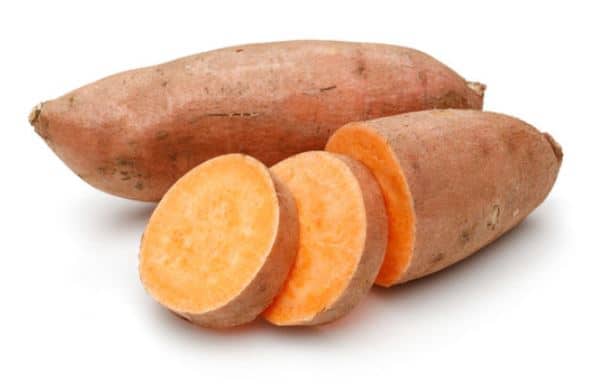
Sweet potatoes, a favorite among root vegetables, fit into almost any diet. They can be used in a variety of ways, from sweet potato fires to sweet potato pie. Sweet potatoes are rich in fiber, vitamins, and minerals that it’s a pity not to eat them. Not to mention that they’re so tasty!
Note: sweet potatoes have oxalates, which bind calcium and other minerals. People with kidney stones or who are considered at high risk of developing them should eat only moderate amounts of sweet potatoes.
Consult your doctor or nutritionist if this causes you concern.
One good serving of sweet potato will give you all the vitamin A you need for the day. Your bones, skin, and hair will benefit.
The amount of fiber contained in sweet potatoes’ peel is another excellent reason to eat them. After eating sweet potatoes, you’ll feel full for a long time, and your blood sugar won’t rise.
One cooked medium sweet potato supplies ¼ of your daily fiber. Just remember to eat the peel, too. Your digestion will thank you.
Manganese, essential for healthy bones, and potassium for muscle and brain function, are minerals present in sweet potatoes. Potassium also reduces anxiety and stress.
Beta-carotene, also present in carrots, is a crucial antioxidant present in sweet potatoes. Dribbling a little olive oil over your serving of sweet potatoes is suggested to increase the absorption of beta-carotene.
Sweet potatoes are chock-full of magnesium, another essential mineral. Magnesium supports the absorption of other vitamins and minerals and gifts you with its benefits.
A medium, skin-on sweet potato, gives you 130 calories, 30 grams of carbohydrates, 3 grams of protein, 5 grams of fiber, 154% of your daily vitamin A needs, 31% of your vitamin C needs, and 15% of your daily potassium needs.
Studies show that eating moderate amounts of sweet potatoes (and sweet potato leaves) may help to regulate blood sugar levels in people with Type 2 diabetes. Purple sweet potatoes are said to be especially beneficial to eye health.
FAQs
How do you know when a sweet potato has gone bad?
You’ll notice some clear signs that a sweet potato has gone south – soft or mushy bits, dark spots, funky smells, mold, wrinkling, the whole spud feeling squashy. If it’s looking shriveled up or feeling too squishy, it’s best to ditch it.
What does the inside of a bad sweet potato look like?
A spoiled sweet potato tends to get a mushy texture or nearly black on the inside – that’s never a good sign. The texture is a dead giveaway too, getting far too mushy or stringy compared to its healthy cousins. Could be some nasty bacteria or mold at work there.
How long is a sweet potato good for?
When kept in a cool, dark place, a sweet potato will normally last 3-5 weeks no problem. Pop it in the basement or garage with decent airflow and it should keep for about 6 months before going bad.
What does sweet potato rot look like?
Rot shows itself as slimy dark splotches on the skin or inside the flesh. There might be a funky, gag-inducing smell too. Too soft or mushy means it’s a soggy mess not worth trying to eat. Toss it!
What does a ripe sweet potato look like?
A perfectly ripe sweet potato has smooth, firm skin without bruises or dents. It should feel heavy in your hand and look beautifully uniform in color. Any sprouts should pull off easily without damaging the skin – then it’s ready to roast up!
You May Also Like: Does Ginger Root Go Bad – A Guide



